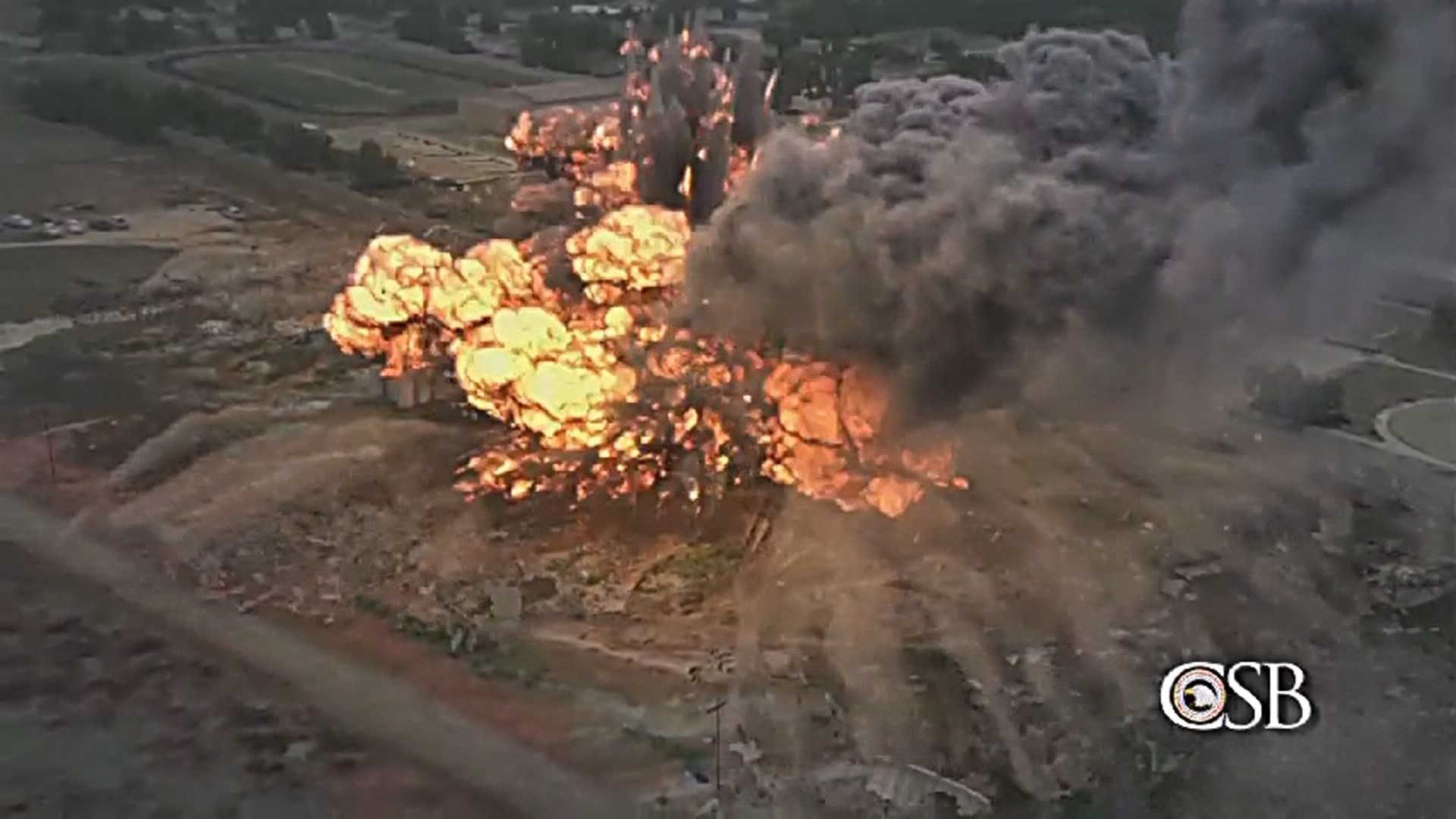AUSTIN, Texas — Policymakers from federal, state and local governments promised changes following a 2013 deadly fertilizer plant fire in West, Texas. The fire at West Fertilizer Company killed 15 people and injured more than 260.
A report filed by the U.S. Chemical Safety Board (CSB) showed more than $230 million in insurance-related losses, $16 million in federal disaster assistance. The company, meanwhile, carried only a $1 million insurance policy.
CSB issued more than a dozen safety recommendations to levels of government.
But a report released in April 2023 by Environmental Integrity Project showed four of the recommendations have not happened.
- “The EPA told the board that it would not follow its recommendation to include fertilizer-grade ammonium nitrate to its list of chemicals that trigger its RMP rule.
- “The International Code Committee has not adopted the board’s recommended changes to the International Fire Code to include more strict requirements for ammonium nitrate storage and handling, including automatic fire detection and suppression systems in flammable buildings, proper ventilation, smoke and heat vents, minimum safe distances between ammonium nitrate and combustible materials, and prohibiting the use of flammable materials in building construction.
- “The West Volunteer Fire Department stopped responding to the board in 2016, making it unclear whether the department followed the recommendation to develop ‘standard operating procedures for pre-incident planning for facilities that store or handle materials such as fertilizer grade ammonium nitrate.’
- “The Texas Department of Insurance told the board that it would not adopt its recommendations to add ammonium nitrate facility guidelines for underwriting risk and annual loss control surveys. This included guidance on considering whether ammonium nitrate was stored safely, with proper ventilation and automatic sprinklers and smoke detectors, at a safe distance from nearby residences, hospitals, and schools.
- “OSHA also did not adopt CSB-recommended changes to its process safety management rules for ammonium nitrate. In 2018, following a victory in the D.C. Circuit Court of Appeals by a trade group representing fertilizer retailers, OSHA issued a memo clarifying that it would not cite ‘retail’ facilities for violation of its process safety management rules. These retail facilities include wholesalers of field beans, grains, and other farm products.”
The Texas Commission on Environmental Quality (TCEQ) inspects fertilizer plants once every two years.
The Texas Department of Insurance lists best practices for facilities storing and handling ammonium nitrate (AN) fertilizer. The list includes “store AN in a structurally sound building … do not store fuel-powered equipment in a building where AN is stored,” and “do not store AN within 3 feet of a building’s roof or support structures.”
In November 2021, the U.S. Environmental Protection Agency (EPA), Occupational Safety and Health Administration (OSHA) and the Cybersecurity and Infrastructure Security Agency (CISA) issued a safety advisory to handle ammonium nitrate.
“Based on information gathered, agencies found that many facilities do not manage chemicals in a safe or secure manner,” the advisory shows.
That same month, EPA’s Office of Enforcement and Compliance Assurance published an enforcement alert showing the regulatory requirements for chemical warehouses and distribution facilities, such as fertilizer plants.
Regarding the fire at the fertilizer plant in Bartlett on Sunday night, the TCEQ provided the following statement:
"The fertilizer facility where the fire occurred last night in Bartlett is not an ammonium nitrate storage or production facility. When the program, Tier II, was moved to TCEQ, there was not a designated investigation frequency in statute or otherwise for ammonium nitrate facilities. TCEQ conducted investigations of all ammonium nitrate facilities during the program’s first year to assess compliance with Tier II reporting requirements. Following this initial assessment, TCEQ implemented a frequency to investigate each facility every two years."

